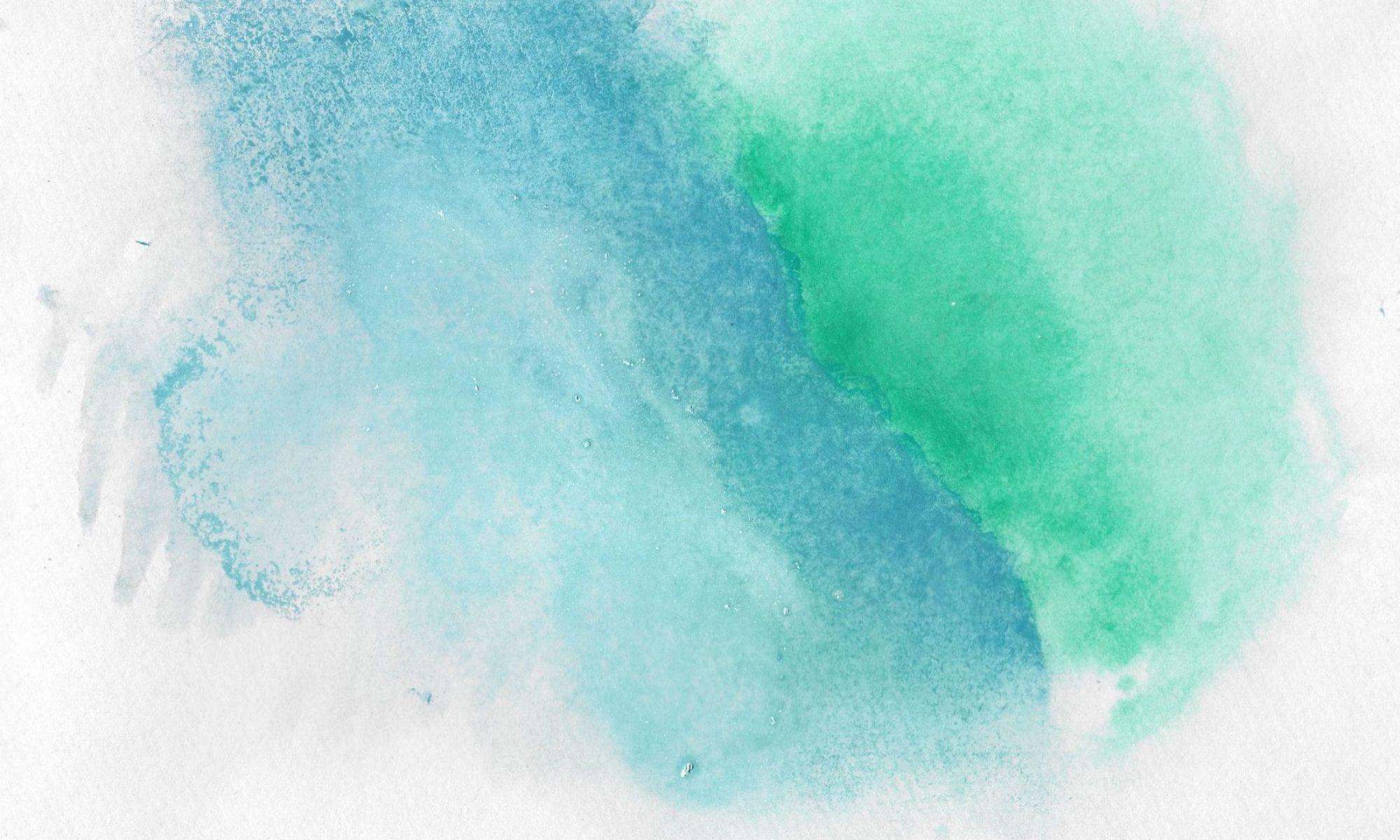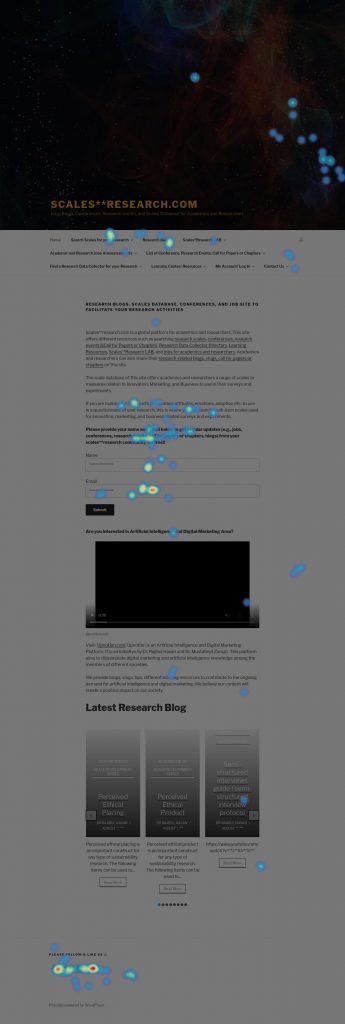A Landing Page is considered the Sales Page of the brand, and it aims to convert visitors into customers. The Landing Page is crucial for the marketing campaign’s performance. For instance, a quality Landing Page may give a higher conversion rate and ROI.
We often ask ourselves: What’s the difference between the Landing Page and the Homepage? A Landing Page is a standalone web page created to drive a specific audience to take a particular action or for a specific marketing campaign. However, a Homepage is a hub for a brand’s website, introducing who they are and what they sell with different Calls to Action (CTA). [We will explain the CTA in another blog]
Here are some tips to optimize your Landing Page :
- Focus on the “Hero Section”
The hero section is the first thing visitors see when they land on your website. This area immediately shows up on the screen under your logo and menu. For the Hero Section, you should clearly show with a title and a photo by explaining:
– Who you are or what is your product/service/offer
– Why are you different from others (from your competitors)
Here are the examples of the “Hero Section” (Screenshot taken by the author). We can easily see the Text, Image and Call to Action (Get Started).

You should explain why, as a customer, I should buy or use your product. How do customers use that product in their daily life? What are the benefits? Use the narration and tell a story.
- Focus on the “Information Task-Fit”
When customers scroll down (at the end of the page), they are about to buy your product. For this step, customers may ask themselves: Why should I buy this product and not others? How is your product different from other products?
Here, you should provide a table comparing your product to other products. It would help if you showed that your product performs for all the criteria while others don’t. Here is an example:

- Integrate “Review and Rating”
Use product reviews and ratings from a third-party website. In addition, if you find any scientific arguments, that would be great. For example, according to a study, 97% of the customers who used this product overcame this problem.
- Focus on the “Pain Point”
You need to talk about the problem and then provide the solution for that problem. Show your customers that you understand the problem well and that here is the solution/answer.
Here are some websites where you can have ideas/examples about the Landing Page.
- Scrapbook (https://www.getscrapbook.com/dtc-landing-pages)

- Great Landing Page Copy (https://greatlandingpagecopy.com)
jacktoto
jacktoto
jacktoto
jacktoto
jacktoto
jacktoto
jacktoto
jacktoto
jacktoto
link toto togel
toto togel
jacktoto
situs toto
situs toto
situs toto
jacktoto
situs toto
jacktoto
jacktoto
jacktoto
jacktoto
jacktoto
jacktoto
jacktoto
situs togel
jacktoto
jacktoto
jacktoto
toto slot
situs toto
situs toto
jacktoto
situs toto
jacktoto
situs togel
situs togel
situs togel
jacktoto
jacktoto
jacktoto
situs toto
slot online
jacktoto
toto togel
situs toto
situs togel
jacktoto
jacktoto
toto slot
situs toto
link toto togel
situs slot
toto togel
jacktoto
jacktoto
situs toto
link toto
slot resmi
toto togel
toto togel
jacktoto
togel online
toto togel
toto togel
situs toto
jacktoto
situs toto
jacktoto
situs toto
situs toto
jacktoto
situs slot
situs toto
situs toto
toto
slot gacor
jacktoto
slot gacor
jacktoto
situs toto
situs slot
toto slot
rimbabola
slot online
toto togel
jacktoto
situs toto
link slot
link slot
jacktoto
situs toto
situs slot
toto togel
jacktoto
link togel
jacktoto
link slot
jacktoto
toto slot
toto togel
link slot
situs slot
link togel
jacktoto
situs toto
toto togel
jacktoto
slot resmi
situs slot
jacktoto
link slot
toto slot
situs togel
jacktoto
link slot
toto slot
toto togel
toto togel
situs toto
toto slot
jacktoto
situs slot
jacktoto
jacktoto
situs gacor
link slot
jacktoto
slot resmi
situs toto
jacktoto
toto togel
toto togel
toto togel
situs toto
jacktoto
jacktoto
toto slot
toto togel
link slot gacor
situs toto
toto togel
situs toto
toto togel
situs toto
jacktoto
jacktoto
slot resmi
jacktoto
toto togel
situs toto
jacktoto
toto slot
situs toto
toto slot
situs toto
jacktoto
jacktoto
jacktoto
jacktoto
situs togel
situs togel
situs togel
situs toto
situs togel
toto togel
jacktoto
jacktoto
jacktoto
jacktoto
toto togel
jacktoto
toto
situs toto
jacktoto
jacktoto
toto slot
jacktoto
situs slot
jacktoto
toto slot
jacktoto
toto slot
situs toto
link slot gacor
jacktoto
jacktoto
jacktoto
situs toto
toto togel
toto slot
jacktoto
jacktoto
jacktoto
jacktoto
jacktoto
jacktoto
jacktoto
jacktoto
situs togel
jacktoto
jacktoto
jacktoto
jacktoto
rtp slot
jacktoto
jacktoto
jacktoto
jacktoto
jacktoto
jacktoto
toto togel
slot online
situs toto
toto togel
slot gacor
toto togel
situs toto
jacktoto
jacktoto
situs toto
jacktoto
toto slot
situs toto
situs togel
toto togel
situs toto
toto togel
jacktoto
link slot gacor
jacktoto
situs toto
jacktoto
slot gacor
toto togel
situs toto
link togel
jacktoto
situs toto
link slot
toto togel
toto togel
situs toto
situs toto
situs toto
situs toto
situs toto
situs toto
situs toto
situs toto
situs toto
situs togel
jacktoto
jacktoto
jacktoto
jacktoto
link togel
jacktoto
link slot
situs toto
link slot
jacktoto
link slot
jacktoto
jacktoto
jacktoto
toto togel
jacktoto
jacktoto
jacktoto
situs slot
jacktoto
jacktoto
link slot
slot gacor
situs toto
situs toto
jacktoto
toto slot
toto slot
jacktoto
link togel
jacktoto
link slot
toto slot
jacktoto
jacktoto
jacktoto
situs resmi
situs slot
situs slot
jacktoto
slot 4d
jacktoto
jacktoto
jacktoto
jacktoto
situs toto
jacktoto
jacktoto
togel
situs toto
toto togel
link slot
link slot
toto slot
jacktoto
jacktoto
slot resmi
situs slot
toto togel
toto togel
toto togel
jacktoto
slot gacor
slot
jacktoto
toto
jacktoto
situs toto
jacktoto
toto slot
situs togel
situs slot
situs toto macau
situs toto
slot gacor
jacktoto
toto togel
togel
jacktoto
jacktoto
jacktoto
slot online
jacktoto
toto slot
situs toto togel
situs toto
situs toto
slot gacor
slot online
situs toto
jacktoto
toto togel
link slot
toto slot
link togel
situs toto
situs toto
situs toto
situs toto
jacktoto
jacktoto
togel
jacktoto
slot resmi
situs toto
situs toto
jacktoto
toto
toto togel
bandar togel
toto togel
sekolah farmasi
akbid pres agung
link togel
togel
situs toto
toto togel
jacktoto
jacktoto
jacktoto
toto togel
slot resmi
jacktoto
jacktoto
link slot
link togel
jacktoto
link togel
jacktoto
situs toto
jacktoto
jacktoto
situs toto
jacktoto
jacktoto
kawi898
kawi898
kawi898
situs toto
jacktoto
jacktoto
link togel
kawi898
kawi898
toto macau
kawi898
situs slot
situs slot
kawi898
situs slot
jacktoto
toto togel
toto togel
kawi898
jacktoto
situs slot
kawi898
jacktoto
bandar togel
situs togel
jacktoto
jacktoto
toto
kawi898
toto togel
jacktoto
link slot
link macau
situs slot
jacktoto
link slot
toto togel
situs slot
slot resmi
toto slot
situs gacor
situs togel
situs toto
jacktoto
situs togel
situs toto
kawi898
toto togel
slot resmi
link slot
toto togel
jacktoto
kawi898
link slot gacor
jacktoto
jacktoto
situs slot
link slot
link togel
situs togel resmi
bandar togel
situs slot online
situs togel resmi
jacktoto
slot gacor
slot
situs toto
situs slot
situs togel tepercaya
rtp slot
toto togel
togel 4d
jacktoto
situs toto
situs toto
situs slot
link toto macau
situs toto
link toto togel
situs toto togel
slot online
toto togel
link slot
situs toto
toto togel
link togel
togel resmi
togel resmi
situs toto
toto togel
jacktoto
slot online
slot 4d
jacktoto
toto slot
situs slot online
link togel
jacktoto
situs gacor
situs slot resmi
jacktoto
jacktoto
jacktoto
jacktoto
jacktoto
jacktoto
link togel resmi
situs toto
jacktoto
jacktoto
jacktoto
situs slot gacor
toto togel
jacktoto
link slot
toto togel
slot gacor
situs togel
jacktoto
situs togel
toto slot
situs togel
situs toto togel
kawi898
jacktoto
situs slot
jacktoto
jacktoto
jacktoto
toto slot
link togel
situs toto
link slot
situs togel
jacktoto
jacktoto
slot gacor
situs toto
toto togel
situs toto
situs toto togel
togel resmi
jacktoto
jacktoto
situs togel
jacktoto
jacktoto
jacktoto
toto slot
toto slot
link togel
situs toto
toto slot
situs slot online
toto slot
situs toto
situs toto togel
toto togel
kawi898
jacktoto
jacktoto
situs gacor
toto
situs toto
toto slot
jacktoto
jacktoto
situs gacor
slot online
jacktoto
situs gacor
togel resmi
situs togel
slot gacor
toto togel
jacktoto
situs toto togel
situs toto
jacktoto
situs toto
slot gacor
situs slot
toto
jacktoto
situs slot
situs slot




